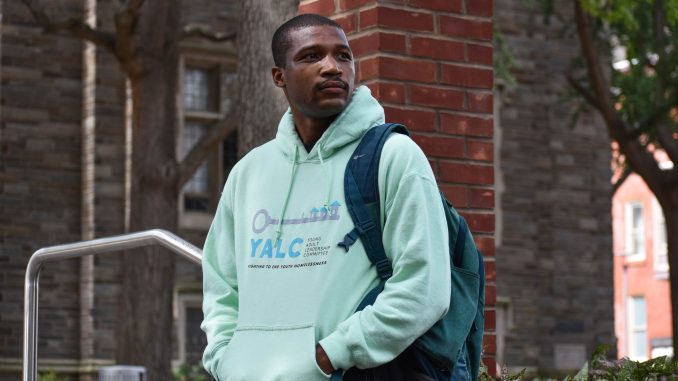
Philadelphia has the highest per-capita rate of children in foster care of any major city in the United States, the Philadelphia Inquirer reported in 2018. Philadelphia has approximately 5,000 children in foster care at any given time, according to an August update to the city’s website.
Six years after entering Philadelphia’s foster care system at 16 years old, Liam Spady has now worked for five organizations fighting against youth housing insecurity.
Spady, a sophomore public health major, experienced trauma from physical assault before entering foster care, leaving him in need of a trauma-informed foster home equipped to handle his epilepsy while being close enough to commute to Central High School.
“I had so many big highs and big lows during that time,” Spady said. “I couldn’t focus on school because I didn’t have housing, and I didn’t have housing because I had epilepsy, and other places in the system weren’t doing their job. It was just problem after problem.”
Spady’s case manager and social workers at Children’s Hospital of Philadelphia supported him after the attack, which inspired him to become an advocate for young people experiencing homelessness, he said. In 2016, Spady co-founded the Philadelphia Office of Homeless Services’ Young Adult Leadership Committee, an organization that works to prevent and end youth homelessness.
In January 2020, OHS recorded 958 unsheltered persons, or people in places not meant for human habitation. Of those, 117 were youth aged 24 and under.
“It just reminds me of how so many people don’t have [a support system] and how many people might have fallen through the cracks,” Spady said. “It kind of drove me to a passion that I have today, to kind of get into the service field, because it’s just critical that young people don’t feel that way and that nobody feels that way.”
Spady began as coordinator for YALC, where he presided over recruitment and worked with leadership and other organizations and spoke at community events, Spady said.
Last year, YALC worked with the School District of Philadelphia to create a training program to help staff identify young people who might be experiencing unstable housing, Spady said. They helped the Office of Homeless Services hire navigators to help young people understand OHS’s services, said Liz Hersh, director of the Office of Homeless Services.
“I think the needs of young adults experiencing housing insecurity and homelessness, whether they’re couch surfing or they actually become homeless, I think they are sometimes not seen by the public and they are sometimes forgotten about, and we cannot allow that to happen,” Hersh said.
Spady is now the co-chair of YALC and works at the Youth Collaboratory, where he focuses on communities outside of Philadelphia. Spady also works with the Philly Homes 4 Youth coalition as a youth co-chair, overseeing subcommittees for the organization.
Tireless advocacy is required to keep youth homelessness a top issue, said Cameron McConkey, co-chair of mental health for the Philly Homes 4 Youth Coalition.
“[Spady] has been tireless in advocating for the things that really need to happen or to change in order for us, as a city, to end youth homelessness, or at least make a substantial impact in the experiences of young people who are housing insecure or homeless,” McConkey said.
Spady plans to work in health education after graduating and hopes organizations will learn to appreciate the experiences of the people they are advocating for, he said.
“Removing that barrier for people, especially of color and who have historical challenges as a community, to get into those leadership positions to really change these large systems that everybody has to sort of coordinate and walk-through on a daily basis,” Spady said. “I think that’s one of the biggest things.”


Be the first to comment